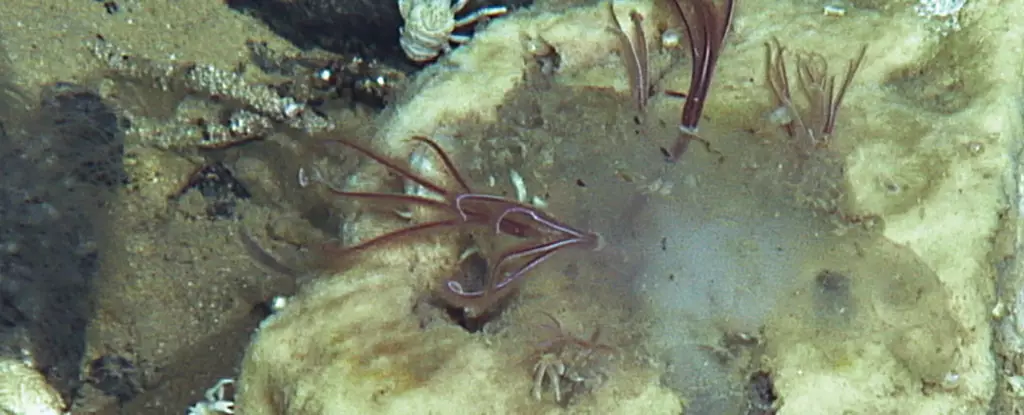The story of life’s evolution often emphasizes adaptability and survival, yet some creatures defy this narrative by demonstrating remarkable stability over hundreds of millions of years. The recent discovery of ancient bone-eating worms, dating back at least 100 million years, forces us to reconsider the fluidity of evolutionary change. These worms, belonging to the genus Osedax, display a disturbing resilience—remaining largely unchanged from their ancient ancestors to today. This lack of significant evolutionary divergence prompts a critical question: why do certain species maintain such a rigid form? It suggests that, in some cases, evolution’s drive for novelty and adaptation might be counteracted by the efficiency of existing biological strategies. These worms are a stark reminder that evolution does not always operate towards progress but sometimes conserves effective survival mechanisms for eons.
Furthermore, their enduring lineage indicates that these worms occupy a niche so effective that natural selection exerts minimal pressure for change. This raises a troubling possibility: certain survival strategies might be so finely tuned that they resist transformation, irrespective of the shifting environmental landscape. It challenges the commonly held belief that evolution is an ongoing, ever-creative process. Instead, it highlights the resilience of specialized adaptations—such as bone digestion—that can be preserved over vast expanses of time, quietly enduring in the deep oceanic abyss.
Challenging Humanity’s Assumed Superiority and Knowledge
This discovery also exposes the limits of our understanding of the ancient oceans and the creatures that inhabited them. For centuries, humans have viewed progress and discovery as a march towards greater knowledge. Yet, findings like these bones buried in fossils reveal a profound ignorance about the longevity and diversity of life forms beneath the surface. The fact that we can identify ancient bone-eating worms based on trace evidence alone underscores our current technological limitations—reliance on non-invasive imaging methods such as CT scans to interpret the distant past. It is a humbling realization: what we think we know is just a fragment of the story.
Furthermore, such discoveries challenge anthropocentric notions of supremacy in the evolutionary chain. Humans often view themselves as the pinnacle of evolution, but these worms, silent carcass decomposers of ancient marine reptiles, demonstrate a different truth. Their presence across millions of years signifies a kind of evolutionary victory—survival not through complexity or intelligence, but through a ruthless efficiency in exploiting a specific resource: bones. It shifts the narrative from humans being the crown of evolution to acknowledging the profound success of simple, specialized organisms that serve as vital components in ecological cycles. This recognition should foster humility, prompting us to see ourselves as part of a complex, interconnected web of life—ongoing, resilient, and often underestimated.
The Ethical and Ecological Implications of Deep-Sea Discoveries
While these worms are primarily fascinating from a scientific perspective, their existence raises deeper ethical questions about our relationship with nature and the deep ocean’s unexplored realms. The deep sea remains one of Earth’s last frontiers, largely untouched and unexplored, yet it is constantly threatened by human activities—climate change, pollution, and deep-sea mining. The survival of such ancient species underscores a critical necessity: conserving these fragile ecosystems before further disruption erodes their delicate balance.
Moreover, recognizing the long evolutionary lineage of these worms should inspire a shift in our approach to ocean conservation. Too often, human innovation and exploitation are seen as progress, but these deep-sea organisms serve as reminders that ancient life, with its own intrinsic value, persists in environments we barely comprehend. We must question the shortsighted economic pursuits that threaten to eradicate such species before we fully understand their role in the planet’s ecological heritage. Protecting these unseen, ancient survivors is not just about preserving biodiversity—it’s an acknowledgment that Earth’s history is a shared inheritance, and that our actions can dismantle millennia of evolutionary stability.
Future Directions and the Quest for Hidden Histories
The discovery of these long-lasting worms sparks an exciting possibility: what else remains concealed in the fossil record, waiting to be uncovered? Modern scientific techniques, such as advanced imaging and genetic analysis, hold the promise of rewriting the history of these ancient organisms. But progress hinges on our willingness to invest in research and preserve the remaining specimens that bear silent witness to Earth’s deep past.
This ongoing quest underscores a broader philosophical point: our understanding of evolution is incomplete, and human curiosity must continue to push the boundaries. The skeletons of ancient reptiles are more than just fossils—they are time capsules, revealing the resilience of life in the face of extinction events and environmental upheavals. As new fossils are examined and techniques refined, we may discover that the story of these worms is just one chapter in a much larger, more complex narrative—one that challenges assumptions and demands a reevaluation of what it means to be evolutionarily successful.
The conservation of these ancient creatures, and the pursuit of their mysteries, underscores a vital truth: we are not the masters of Earth’s history, but rather custodians of its vast and varied legacy. Acknowledging the ancient roots of even the most obscure organisms forces us to confront our place in the planet’s evolutionary continuum—and to consider more carefully how our actions impact the delicate balance of life on Earth.


Leave a Reply